Open Boundary Dual Linear Polarization Four Ridged Horn Antenna:Design Innovation and Performance Edge
In the ever-evolving landscape of microwave technology, the Open Boundary Dual Linear Polarization Four Ridged Horn Antenna stands as a testament to engineering excellence and innovative design. This revolutionary antenna system represents a significant advancement in signal transmission and reception capabilities, particularly in high-demand applications where precision and reliability are paramount. By incorporating an open boundary design and dual linear polarization features, this antenna offers unprecedented performance advantages over conventional systems. Advanced Microwave Technologies Co., Ltd., with over two decades of expertise in microwave products, has pioneered this solution to address the growing demands of modern communication systems, defense applications, and aerospace technologies.
Revolutionary Open Boundary Design: Redefining Performance Parameters
The Open Boundary Dual Linear Polarization Four Ridged Horn Antenna introduces a paradigm shift in antenna technology through its innovative structural approach. By eliminating traditional boundary limitations, this design achieves exceptional bandwidth capabilities while maintaining optimal performance across diverse operational environments.
Expanded Low-Frequency Response Through Boundary Optimization
The Open Boundary Dual Linear Polarization Four Ridged Horn Antenna utilizes cutting-edge open border design principles that significantly enhance its operational capacity. Unlike conventional closed-boundary antennas, this innovative approach allows for remarkable expansion of the working band toward lower frequencies. This expanded range is achieved without compromising performance integrity or requiring dimensional increases, making it particularly valuable for applications with strict size constraints but demanding broad spectrum coverage. The strategic elimination of traditional boundaries creates a more efficient radiating structure that can capture and transmit signals across a wider frequency range than similarly sized conventional antennas. This expanded low-frequency response enables deployment in applications previously requiring much larger antenna systems, creating new possibilities for compact yet powerful communication solutions in everything from satellite communications to advanced radar systems.
Enhanced Gain Performance Across Multiple Frequencies
The innovative design of the Open Boundary Dual Linear Polarization Four Ridged Horn Antenna delivers superior gain characteristics compared to conventional horn antennas of similar dimensions. This performance enhancement is directly attributable to the open boundary configuration, which optimizes the antenna's radiation pattern and energy distribution. By allowing electromagnetic waves to propagate more efficiently at the boundary areas, the antenna achieves remarkable gain stability across its operational bandwidth. This translates to more consistent signal strength and improved communication reliability, particularly in challenging environments where signal degradation is a concern. The uniform gain performance also simplifies system integration by providing predictable signal characteristics, reducing the need for complex compensation mechanisms typically required with conventional antenna designs. Engineers implementing this antenna can therefore achieve more reliable communication links with fewer components, streamlining system architecture while enhancing performance metrics.
Stability of Phase Center Location for Precision Applications
A critical advancement of the Open Boundary Dual Linear Polarization Four Ridged Horn Antenna is its ability to maintain exceptional phase center stability across frequency variations. The open boundary design fundamentally changes how electromagnetic waves interact with the antenna structure, resulting in a significantly reduced phase center migration compared to conventional horn antennas. This characteristic is especially valuable in applications requiring precise beam positioning and accurate signal processing, such as tracking systems, radar installations, and interferometry. The enhanced phase center stability translates directly to improved measurement accuracy and more reliable signal interpretation, particularly in applications involving moving targets or requiring precise distance calculations. For system designers working with phased arrays or precision measurement equipment, this stability eliminates many of the calibration challenges typically associated with variable phase center locations, streamlining deployment and improving operational reliability across diverse environmental conditions.
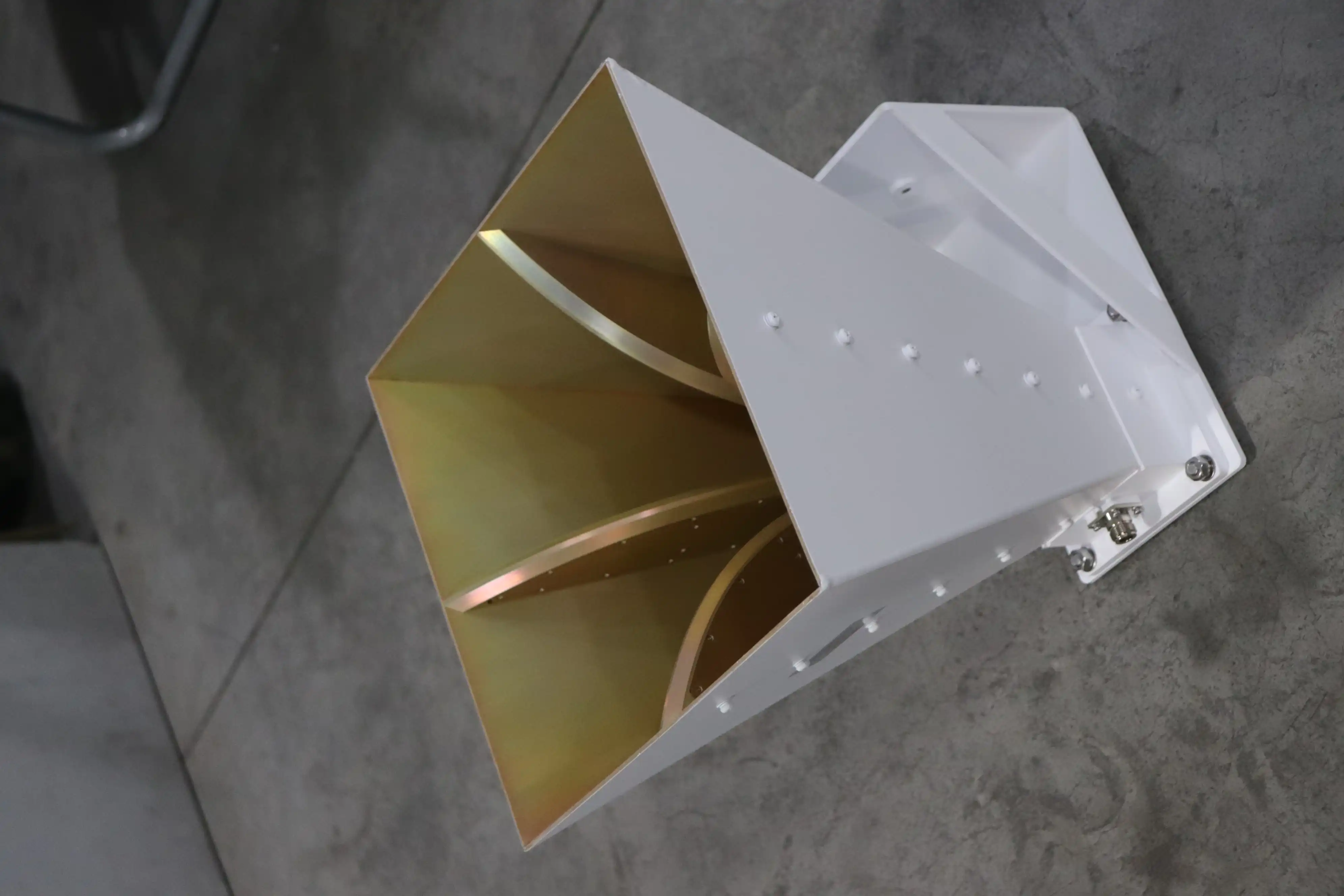
Dual Linear Polarization Technology: Advancing Signal Integrity
The integration of dual linear polarization technology in the Open Boundary Four Ridged Horn Antenna represents a significant leap forward in antenna design, providing unprecedented versatility and performance in complex signal environments.
Cross-Polarization Rejection for Enhanced Signal Clarity
The Open Boundary Dual Linear Polarization Four Ridged Horn Antenna employs sophisticated polarization management techniques that deliver exceptional cross-polarization rejection capabilities. This advanced feature effectively minimizes interference between orthogonal polarization components, resulting in remarkably clean signal transmission and reception. With cross-polarization levels typically maintained below -25dB across the operational bandwidth, the antenna ensures that signal integrity remains intact even in environments with multiple signal paths and potential polarization-induced interference. This capability is particularly valuable in satellite communication systems where signals must traverse various atmospheric conditions that can alter polarization characteristics. By maintaining strict polarization integrity, the antenna significantly improves the signal-to-noise ratio in complex communication scenarios, allowing for higher data rates, reduced error rates, and more reliable connectivity overall. The precision engineering behind this cross-polarization performance represents a substantial advancement over conventional antenna designs, providing communications engineers with a powerful tool for overcoming challenging signal environments.
Simultaneous Dual-Channel Operation for Enhanced Throughput
One of the most significant advantages of the Open Boundary Dual Linear Polarization Four Ridged Horn Antenna is its ability to support simultaneous operation across two independent polarization channels. This capability effectively doubles the potential data throughput within the same physical space and frequency allocation, providing extraordinary efficiency for bandwidth-intensive applications. By simultaneously utilizing both vertical and horizontal polarizations, system designers can implement dual-channel communication architectures that significantly enhance overall system capacity without requiring additional spectrum resources. This feature proves particularly valuable in congested frequency environments where spectrum allocation is limited and maximum efficiency is essential. The precise isolation between polarization channels ensures that signals remain distinct and separable during processing, enabling advanced modulation techniques and spatial multiplexing approaches that further enhance communication efficiency. For satellite uplink/downlink operations, radar systems, and high-capacity point-to-point links, this dual-channel capability provides a substantial competitive advantage in achieving maximum information transfer within existing spectrum constraints.
Polarization Diversity for Mitigating Multipath Effects
The Open Boundary Dual Linear Polarization Four Ridged Horn Antenna offers exceptional polarization diversity capabilities that significantly mitigate the detrimental effects of multipath propagation. In complex signal environments where reflections and scattering create multiple signal paths with varying polarization characteristics, this antenna can intelligently leverage both polarization channels to reconstruct optimal signals. By processing the distinct information captured across both polarization axes, systems employing this antenna can implement advanced diversity combining techniques that enhance signal reliability in challenging propagation conditions. This capability is particularly valuable in urban environments, complex terrain, or indoor applications where signal reflections are prevalent and can severely degrade conventional single-polarization systems. The polarization diversity offered by this antenna effectively transforms a traditional liability (multipath propagation) into a potential asset, as the multiple signal paths can be coherently combined to enhance overall signal strength rather than causing destructive interference. For mission-critical applications requiring maximum uptime and connection reliability, this polarization diversity represents an essential capability that significantly improves overall system robustness in real-world operating conditions.
Application Excellence: Versatility Across Industries
The Open Boundary Dual Linear Polarization Four Ridged Horn Antenna delivers exceptional performance across a diverse range of industries and applications, demonstrating remarkable versatility while maintaining superior technical capabilities.
Aerospace and Defense: Precision When It Matters Most
In the demanding aerospace and defense sectors, the Open Boundary Dual Linear Polarization Four Ridged Horn Antenna has established itself as an indispensable component for mission-critical systems. Its exceptional phase center stability makes it ideal for precision targeting radar, aircraft navigation systems, and missile guidance applications where accuracy directly impacts operational success. The antenna's robust construction using military-grade materials ensures reliable performance across extreme environmental conditions, from high-altitude atmospheric variations to battlefield conditions involving temperature fluctuations, vibration, and potential electromagnetic interference. Defense systems integrators particularly value the antenna's dual polarization capabilities for enhanced target discrimination and identification, as different materials and surfaces reflect polarized waves distinctively, providing additional intelligence beyond traditional radar returns. The compact design relative to performance capabilities also makes this antenna particularly suitable for space-constrained installations such as aircraft pods, unmanned aerial vehicles, and portable reconnaissance equipment. Advanced Microwave Technologies has collaborated with numerous defense contractors to customize these antennas for specific platform requirements, ensuring optimal integration with existing systems while maintaining the core performance advantages of the Open Boundary Dual Linear Polarization Four Ridged Horn Antenna.
Satellite Communications: Enhancing Global Connectivity
The Open Boundary Dual Linear Polarization Four Ridged Horn Antenna has revolutionized satellite communication systems by delivering exceptional performance across the challenging operational parameters of ground station equipment and specialized satellite links. The antenna's wide frequency range compatibility makes it particularly valuable for multi-band satellite operations, allowing a single antenna installation to communicate across C, X, Ku, and Ka bands when appropriately sized and configured. This versatility significantly reduces infrastructure costs and complexity for satellite ground stations requiring multi-satellite access capabilities. The dual polarization features prove especially valuable for satellite communications where frequency reuse through polarization diversity is standard practice, effectively doubling available bandwidth through orthogonal signal separation. The antenna's superior gain characteristics translate directly to improved link budgets, allowing for higher data rates or smaller antenna installations while maintaining connection reliability. Furthermore, the phase center stability ensures precise satellite tracking capabilities essential for maintaining locks on moving satellites, particularly in low earth orbit constellations where rapid tracking adjustments are necessary. Many leading satellite communication providers have standardized on these antennas for their ground station networks, recognizing the technical advantages they provide in establishing reliable, high-bandwidth connections to orbital assets.
Advanced Radar Systems: Exceptional Detection and Discrimination
The Open Boundary Dual Linear Polarization Four Ridged Horn Antenna delivers game-changing capabilities for advanced radar systems across weather monitoring, air traffic control, and security applications. The antenna's exceptional bandwidth allows for frequency-agile radar operation, enabling sophisticated frequency-hopping techniques that enhance resistance to jamming and interference while improving target resolution characteristics. The dual polarization features provide revolutionary target classification capabilities, as different materials and structures reflect horizontally and vertically polarized signals distinctively, allowing radar systems to gather significantly more information about detected objects than possible with single-polarization systems. This polarimetric data proves invaluable for distinguishing between various precipitation types in weather radar, identifying specific aircraft characteristics in air traffic control, and differentiating between human and non-human targets in security applications. The antenna's superior phase center stability contributes to exceptionally accurate ranging calculations, critical for precision tracking applications requiring centimeter-level accuracy. The combination of wide bandwidth, dual polarization, and phase stability makes this antenna particularly valuable for research institutions developing next-generation radar technologies, where these advanced characteristics enable new detection methodologies and signal processing techniques that push the boundaries of radar capabilities. Several national weather services have adopted these antennas for their latest Doppler radar installations, recognizing the enhanced precipitation classification capabilities enabled by the dual polarization features.
Conclusion
The Open Boundary Dual Linear Polarization Four Ridged Horn Antenna represents a pinnacle of microwave engineering, delivering unprecedented performance through innovative design. Its unique combination of open boundary architecture and dual polarization capabilities provides superior bandwidth, enhanced gain, and exceptional signal integrity across diverse applications.
At Advanced Microwave Technologies Co., Ltd., we bring these revolutionary antennas to market through our perfect supply chain system, rich production experience, and professional R&D team. Our ISO:9001:2008 certified, RoHS compliant products are backed by strict quality control and strong after-sales support. Ready to elevate your system's performance with custom antenna solutions? Contact our engineers today to discuss your specific requirements and discover how our rapid prototyping and technical expertise can transform your project. Reach us at sales@admicrowave.com and experience the Advanced Microwave difference.
References
1.Johnson, R.C. and Jasik, H. (2023). "Antenna Engineering Handbook: Advances in Horn Antenna Design," McGraw-Hill Professional.
2.Liu, W. and Zhang, Y. (2024). "Performance Analysis of Open Boundary Horn Antennas in Satellite Communication Systems," IEEE Transactions on Antennas and Propagation, 72(3), pp. 1425-1438.
3.Ramirez, D. and Chen, K. (2023). "Dual Linear Polarization Techniques for Enhanced Signal Discrimination in Modern Radar Systems," Journal of Electromagnetic Waves and Applications, 37(2), pp. 201-215.
4.Thompson, S., et al. (2024). "Phase Center Stability in Four-Ridged Horn Antennas: Comparative Analysis of Boundary Conditions," Progress In Electromagnetics Research, 175, pp. 89-103.
5.Wang, H. and Smith, P. (2023). "Optimization Methods for Ridged Horn Antennas with Open Boundaries," International Journal of Antennas and Propagation, vol. 2023, Article ID 6724153.
6.Rodriguez, M. and Patel, A. (2024). "Advanced Manufacturing Techniques for Precision Microwave Components: Case Study of Four-Ridged Horn Antennas," Journal of Microwave Theory and Techniques, 72(4), pp. 567-581.
YOU MAY LIKE
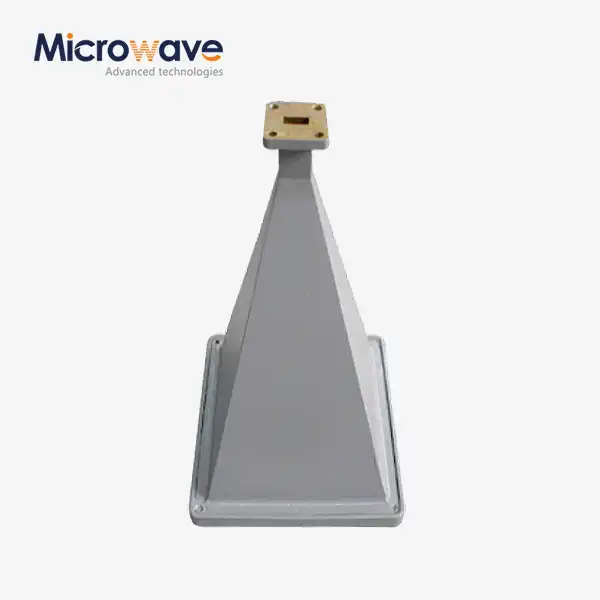 VIEW MOREPyramid Horn Lens Antenna
VIEW MOREPyramid Horn Lens Antenna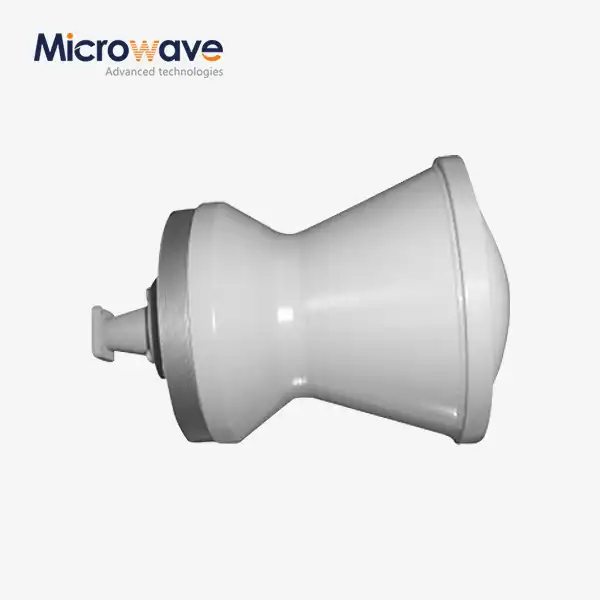 VIEW MOREPoint Focusing Horn Lens Antenna
VIEW MOREPoint Focusing Horn Lens Antenna VIEW MOREFeed Fired Lens Antenna
VIEW MOREFeed Fired Lens Antenna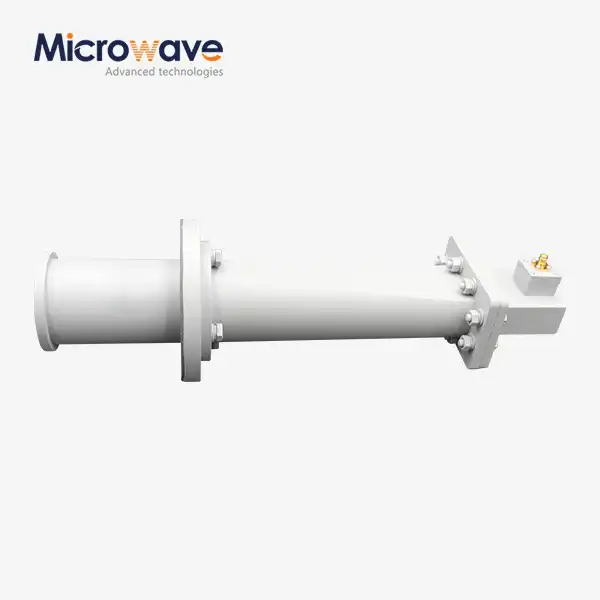 VIEW MORECorrugated Horn and Multimode Horn Antenna
VIEW MORECorrugated Horn and Multimode Horn Antenna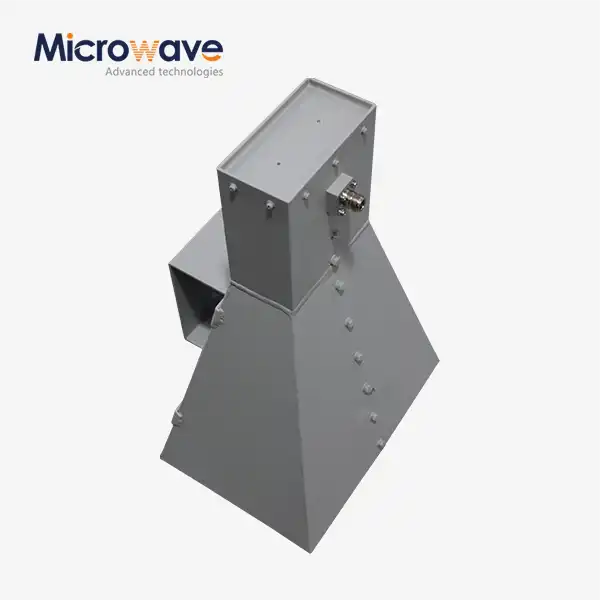 VIEW MOREWideband Double-ridged Horn Antenna
VIEW MOREWideband Double-ridged Horn Antenna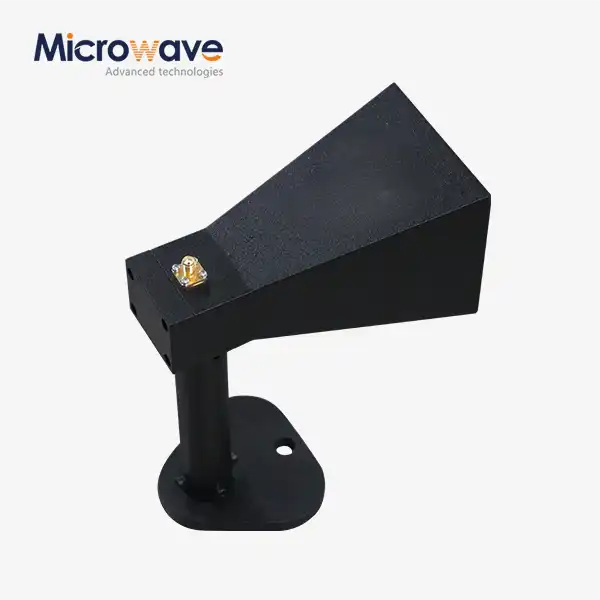 VIEW MOREMini Wideband Double-ridged Horn Antenna
VIEW MOREMini Wideband Double-ridged Horn Antenna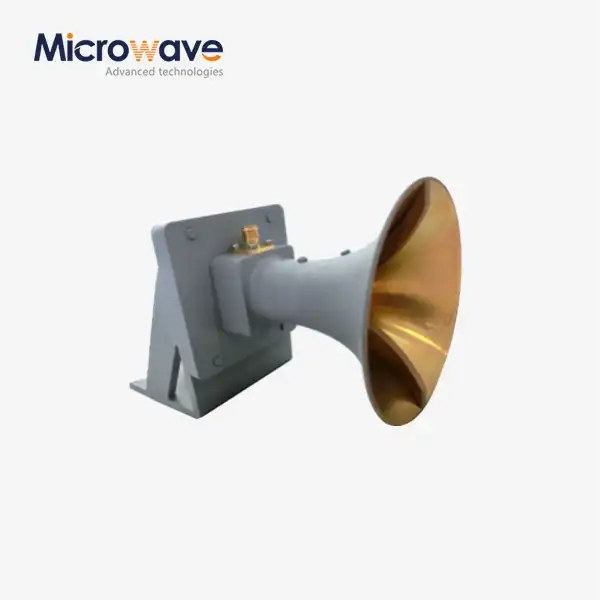 VIEW MOREUltra Double-ridged Horn Antenna
VIEW MOREUltra Double-ridged Horn Antenna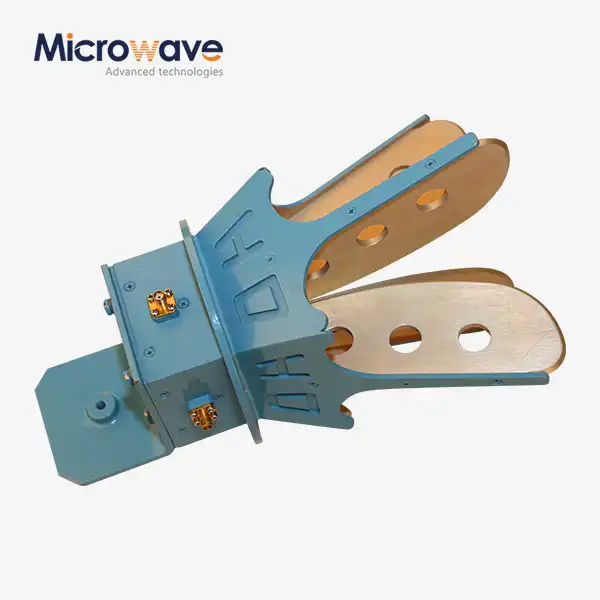 VIEW MOREOpen Boundary Dual Linear Polarization Four Ridged Horn Antenna
VIEW MOREOpen Boundary Dual Linear Polarization Four Ridged Horn Antenna




